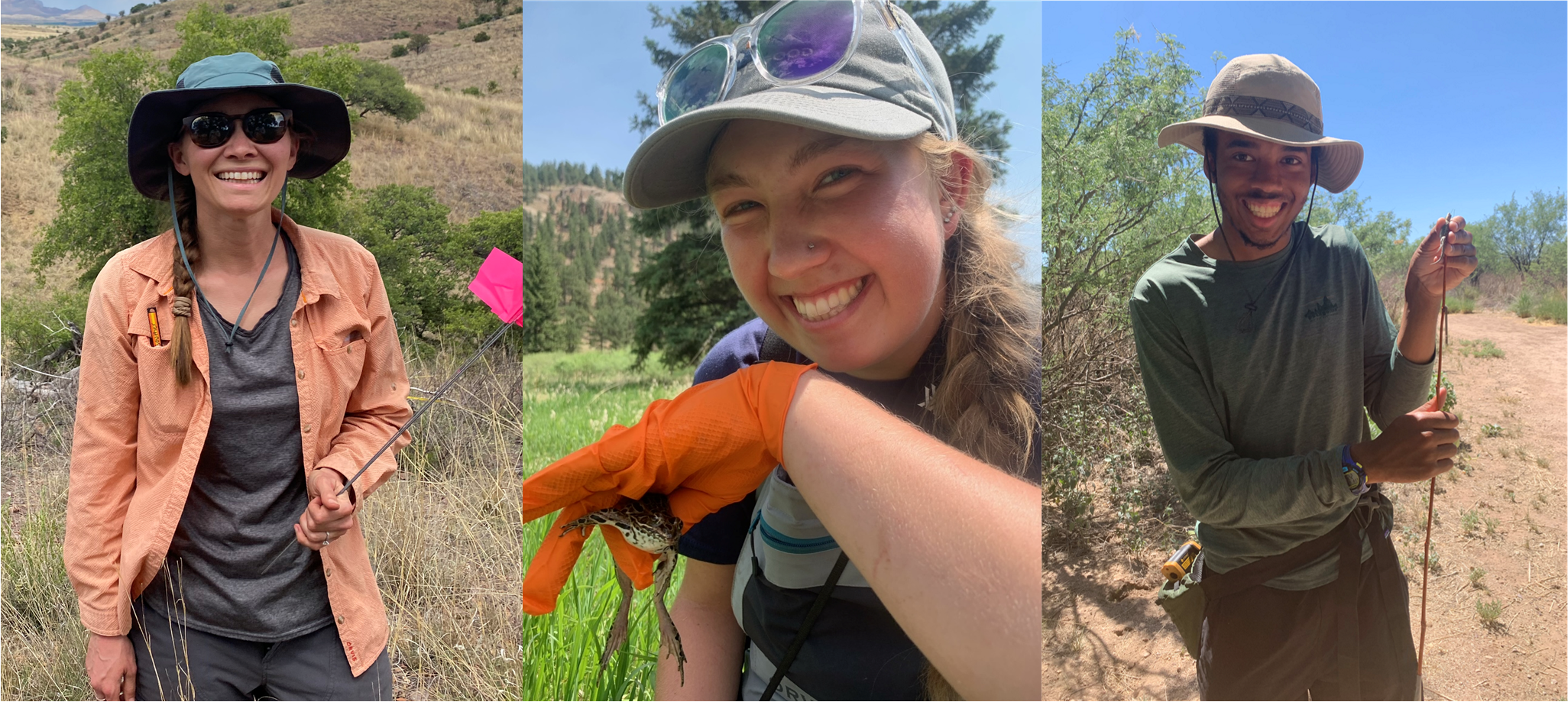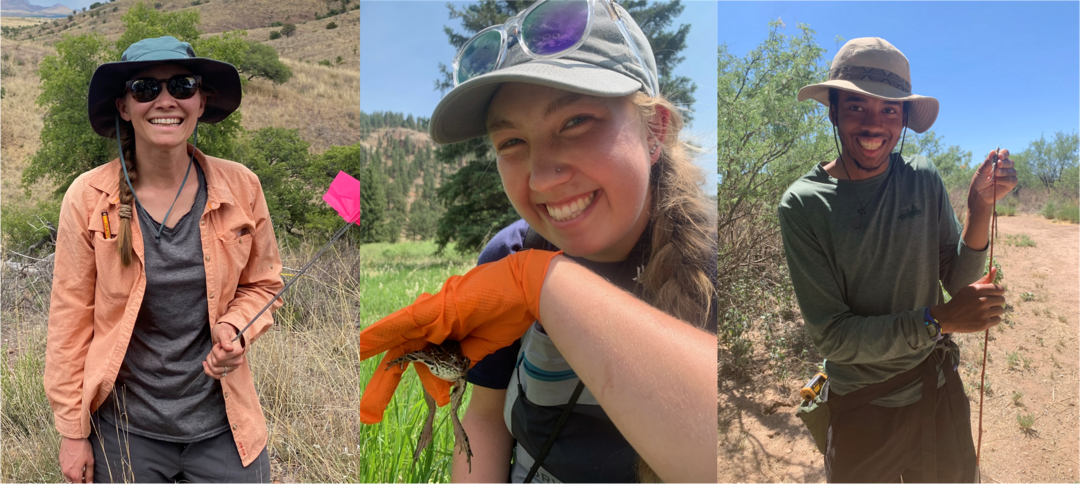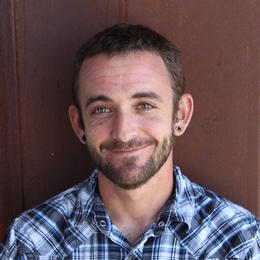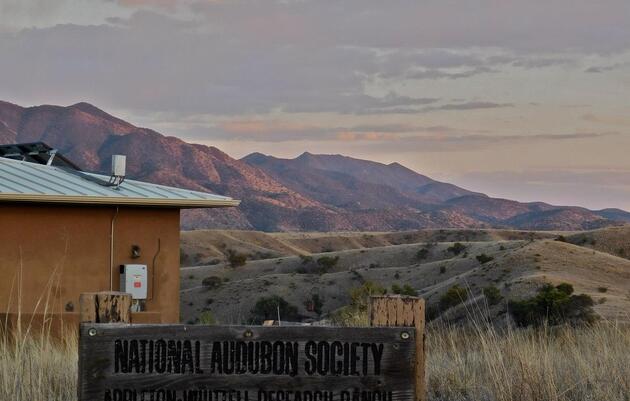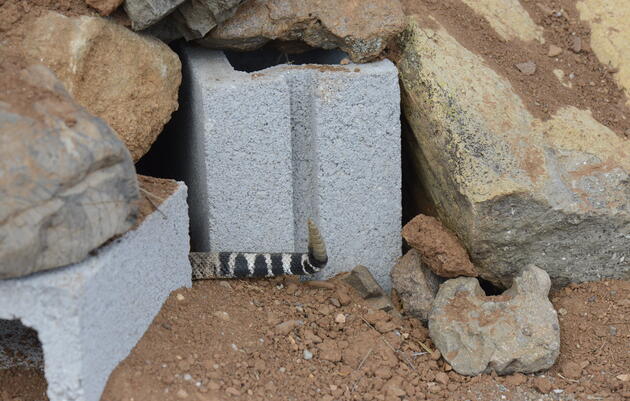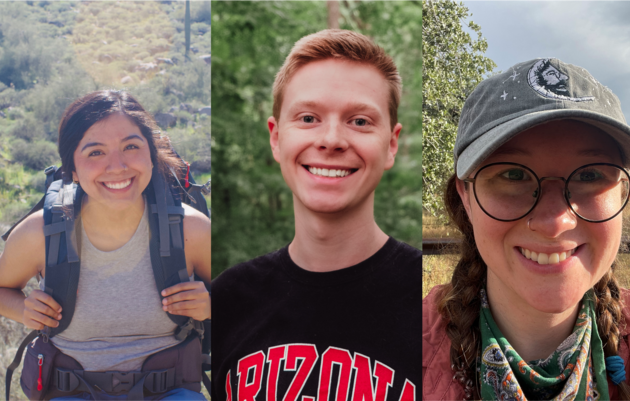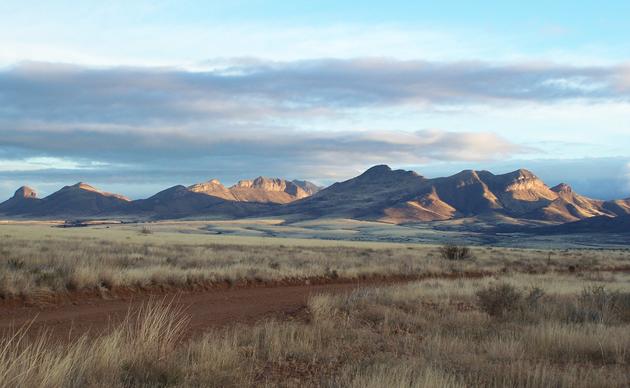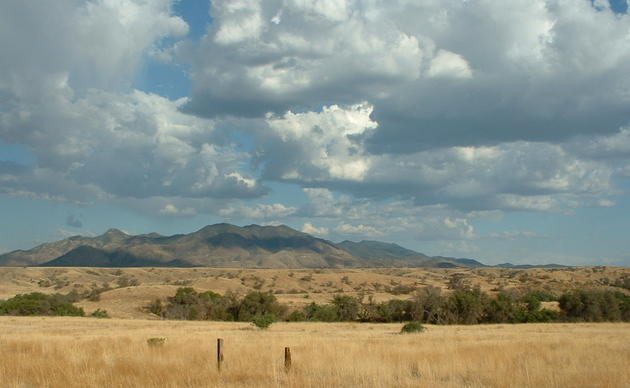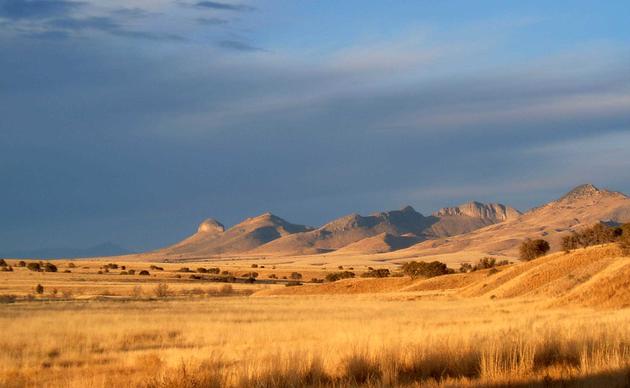The Appleton-Whittell Research Ranch (AWRR) is a one-of-a-kind natural laboratory. With nearly 8,000 acres of protected grassland, oak savannah, and riparian forest within its borders, it offers a unique opportunity to investigate questions critical to the conservation of southeastern Arizona’s habitats, birds, and other wildlife. However, we’re not without our limitations.
The agreement with the Appleton family that gave management privileges to the National Audubon Society is built on the singular ambition of leaving the AWRR better than we found it. This may seem like a simple goal at first glance, but in practice it’s often quite the Catch-22. We must encourage and enable investigations that will help us tackle the multitude of conservation challenges faced by the AWRR, but those investigations must not disturb stable, native ecosystems or leave a lasting negative impact on the Ranch.
Designing such a study, one with big conservation outputs and negligible environmental impacts, is no easy task, but you wouldn’t know it when looking through any given year’s Appleton-Whittell Research Fellowship applications. While we’re grateful to have so many bright, young scientists ready to put their minds to designing research that is compatible with and beneficial to the AWRR, it does present one more challenge: deciding which of our potential fellows to support.
It was no easier this year than it’s been in any year previous, but we’ve dug through the proposals, made the hard decisions, and are ready to announce 2024’s successful applicants! Join us in welcoming this latest cohort of Appleton-Whittell Research Fellow and read on to learn more about their work.
Laura Nicholson - Northern Arizona University
Having first visited the AWRR while assisting with another project prior to starting graduate school, Laura Nicholson is excited to return this year as a PhD student in Plant Conservation working out of Dr. Sara Souther and Clare Aslan’s Northern Arizona University Lab of Conservation Ecology. Following in the footsteps of many students before her (including one of last year’s AWRR Research Fellows), Laura will be contributing to the Emory Oak Collaborative Tribal Restoration Initiative, a National Science Foundation-supported project co-produced with western Apache Tribes that aims to gather the knowledge needed to conserve the culturally and ecologically valuable Emory Oak.
Emory Oak (Quercus emoryi) is the dominant oak species on the AWRR and across much of southeastern Arizona’s Madrean oak woodlands, and as such they are critical to both the ecosystems and cultures of the region. Their acorns are low in tannins, nutritious, and particularly delectable. They have long been gathered and consumed by Indigenous communities including the Yavapai, Tonto, San Carlos, and White Mountain Apache Tribes. A keystone plant in southeastern Arizona, Emory Oak also feeds birds like the Montezuma Quail, Mexican Jay, and Acorn Woodpecker; provides shelter for nesting Azure Bluebirds and sleeping Coatimundi; and in ways defines the Madrean oak savannahs that can be seen from any window on the AWRR.
Concerningly, both Indigenous communities and conservationists have noticed a steep decline in Emory Oak acorn outputs, essential for the reproduction and success of this species. Emory Oaks tend to be less productive toward the end of their life, and this lack of young trees places communities, cultures, and ecosystems at risk. The cause of this decline remains uncertain, but climate change, altered fire ecology, and aridification are all likely contributors.
Through her research, Laura will be investigating biscogniaxua, a fungal disease that may be affecting Emory Oak survival and reproductive rates and that is likely to increase in prevalence in a hotter, drier future. In addition, she’ll be exploring the connections between this disease, fire, soil conditions, drought, and the health of Emory Oak communities. We’re thrilled to have her back on the AWRR this season, and even more excited to be able to support her critically important work.
Emma Sudbeck (University of Arizona)
Emma Sudbeck is joining us this year as a first year master’s student out of the University of Arizona’s School of Environment and Natural Resource. With the guidance of her advisors in the Arizona Cooperative Fish and Wildlife Research Unit and the Arizona Game and Fish Department, she will be working to gather the data needed to manage one of the greatest threats to Arizona’s aquatic wildlife, the invasive American bullfrog (Lithobates catesbeianus).
Stocked into Arizona’s waters by the Arizona Game and Fish Department from the 1920s into the early 1980s as a game (huntable) species, American bullfrogs were quick to overwhelm native aquatic wildlife and those tasked with managing it. Their tadpoles can take up to two years to develop and compared to our native amphibians, which tend to go from egg to adult in a single season, they are quite large, have an appetite to match, and are quick to munch on their smaller pondmates. The threat doesn’t end when these tadpoles metamorphose into adults, as these large frogs can take a diversity of prey including insects, other frogs, reptiles, and even birds and small mammals. Add to the equation that American bullfrogs can be very effective dispersers of Ranavirus and Chytrid fungus, two diseases that often prove fatal to our native amphibians, and you have a serious problem. Put simply – add American bullfrogs to a southwestern pond rich with native amphibians and fish, and within a few seasons you’ll be left with a bullfrog-only system.
While we understand well the threat that American Bullfrogs pose, we are lacking the information needed to manage them effectively. Little is known about American bullfrog dispersal and reproductive ecology in the Southwest, and as such eradication tends to be a long-term and extremely labor-intensive endeavor. Through her research, Emma hopes to fill some of these gaps and help wildlife managers leverage limited resources by identifying sites and seasons during which removal efforts will have the greatest impact. Working in the San Rafael Valley and Canelo Hills, Emma will be using a combination of mark-recapture and radio telemetry techniques to document the distance American bullfrogs will travel to colonize a new area and to determine what factors affect this dispersal distance. In addition, she will be working with our partners on the Babacomari Ranch to gather reproductive data using animals removed from the property during a large-scale eradication effort.
With federally protected Chiricahua Leopard Frogs and Desert Pupfish calling the AWRR home and American bullfrogs constantly sneaking through our fences, we are excited to learn from Emma’s work and to apply this knowledge to our own management efforts. We’ll be looking forward to her making use of the Ranch this summer as she bounces between her southeastern Arizona field sites!
Marcus Williams (Christopher Newport University)
As an undergraduate student at Virginia’s Christopher Newport University, Marcus Williams is early on in his academic career, but he’s no stranger to research or the Research Ranch. Alongside his coursework, Marcus has been working as a research assistant in the Lattanzio Lab, helping Dr. Lattanzio and his students as they strive to understand how a changing environment can influence reptile and amphibian anatomy, physiology, and behavior. He joined the lab for his first stay on the Ranch last summer, and this season he’s joining us as an AWRR Research Fellow.
Through his research, Marcus hopes to answer a question that has been brought to the forefront by the Lattanzio Lab’s ongoing studies: how do lizards sense ultraviolet (UV) light? It has for over a century been assumed that temperature is the driving environmental factor behind reptile behavior, regulating everything from daily movements to digestion. This assumption has worked its way into models describing how reptiles will react to a changing, warming climate, and this in turn has influenced the ways in which conservationists work to protect these animals. However, the Lattanzio Lab’s experiments are showing us that UV light is at least as influential as temperature in driving reptile behavior, and that under certain conditions lizards will even push themselves to the point of overheating for the sake of soaking up some UV rays. But if UV light is so important to lizards, how do they sense its presence?
Marcus and others predict that lizards’ parietal eye might be the answer. Sometimes called a “third eye”, the parietal eye is a light detecting organ that sits atop the heads and between the true eyes of many lizards, frogs, salamanders, and fish. While we know it plays a role in the detection of light, our understanding of its full function is extremely limited. Through lab-based studies of the AWRR’s Ornate Tree Lizards (Urosaurus ornatus), Marcus hopes to unravel the mystery.
We were impressed when Marcus showed up on the ranch as a young research assistant, and we’re even more impressed to see him taking on his own investigations. We’ll be looking forward to seeing him again later this summer, and maybe he’ll join us again one day as a graduate student.
Reaching our conservation goals would not be possible without deep knowledge of the species, habitats, and ecosystems with which we work. We’re forever grateful to our visiting researchers for keeping us learning, and we’re grateful to have the opportunity to support their efforts through the AWRR Research Fellowship. Stay tuned for updates as our 2024 fellows embark on their summer projects!

